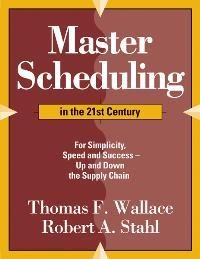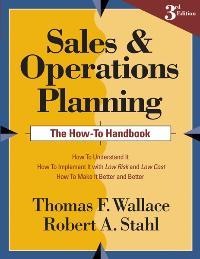




Using Executive S&OP to Manage Both the
Inside and Outside Factory
Early in my career (back when I had a real job), I was the recipient of a very profound statement. I was telling a customer why we were late on a shipment for the third time when he stopped me mid-sentence and said, "Bob, I don't buy your problems, I buy your product."
What this customer meant, of course, was that managing my business and its resources is not their job, but mine. He was right! It is indeed our job to establish balance between demand and supply prior to accepting customer orders so that we can ship effectively on time, all the time. We were not doing that.
While this customer's statement was as true then as it is today, a lot has changed since. Back then we didn't have all of the tools necessary to do the proper job. But today we do! That's the good news. The bad news is that with today's extent of outsourcing, resources are scattered all over the globe, making this job more difficult than ever. The customers don't care whether we or someone else, half a world away, make the product. They expect us to establish balance between demand and supply, so that we can meet their needs when they place orders. Gaining the full benefit of these tools today is more important than ever.
 Executive S&OP brings to us the set of tools to perform effective planning of capacity for the medium and longer horizon, and Master Scheduling provides the set of tools for managing the short term inside the Planning Time Fence (the cumulative lead time of the product).
Executive S&OP brings to us the set of tools to perform effective planning of capacity for the medium and longer horizon, and Master Scheduling provides the set of tools for managing the short term inside the Planning Time Fence (the cumulative lead time of the product).
These tools must be used effectively in today's new world of outsourced manufacturing for managing both the inside factory (ours) and the outside factory (contract manufacturers, suppliers, and so forth). The customer just doesn't care who owns the plant.
Let's focus more specifically on the tool within Executive S&OP known as Resource Requirements Planning (RRP). Each month this tool converts the Production Plan - derived from the new Sales Forecasts - into workload for those resources you've identified as important. Candidates include all of the following, and more:
• Critical work centers in our factory or a supplier's factory
• Critical human skill sets in our factory or a supplier's factory
• Critical pacemakers for flow lines in our factory or a supplier's factory
• Critical raw materials
• Required storage space in our warehouse or a third party warehouse
• Transportation constraints - rail cars or trucks
• Order entry and engineering resources in make-to-order, or finish- to-order businesses
• Etc, etc
 Our approach recommends forecasting primarily at the family level for the entire Executive S&OP horizon, with complete SKU granularity only inside the Planning Time Fence. Valid "simplifying assumptions" about Mix are used to calculate resource requirements for the future based on the family forecast. We believe this approach provides a simpler and more effective way to planning the future, requiring less time and energy from the Sales & Marketing organization, leaving them to do what they do what they do best - sell
Our approach recommends forecasting primarily at the family level for the entire Executive S&OP horizon, with complete SKU granularity only inside the Planning Time Fence. Valid "simplifying assumptions" about Mix are used to calculate resource requirements for the future based on the family forecast. We believe this approach provides a simpler and more effective way to planning the future, requiring less time and energy from the Sales & Marketing organization, leaving them to do what they do what they do best - sell
The result of this process displays the relationship between demand and supply for a given resource. These Resource Requirements Planning displays compare the following:
1. What do I need in this resource to satisfy all family forecasts
2. What have I demonstrated in this resource to be capable of doing
3. What is the projected demand/supply relationship going out into the future
4. Where are the imbalances, if any - for corrective action, with time to do something about it before it's a customer service problem?
We've learned much since those early days about managing the entire supply chain with easier and more effective methods. We know many companies that are doing this stuff every day to great advantage. Executive S&OP, and the tools within it, are the key to pro-actively keeping balance between demand and supply in both the inside and the outside factories. That's our job! Using these tools is how companies have become masters of their own destiny, rather than the victims of circumstance.